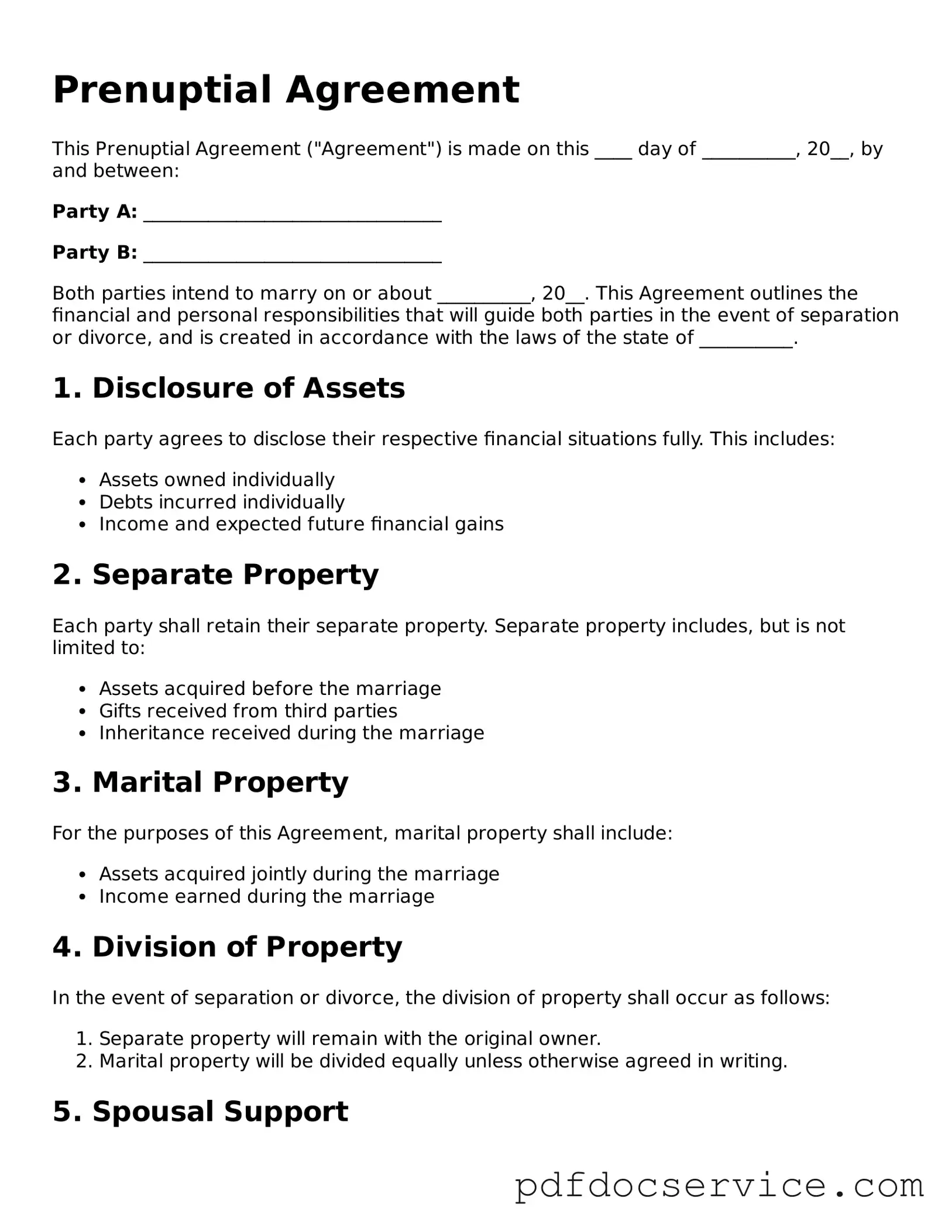What is a prenuptial agreement?
A prenuptial agreement, often called a prenup, is a legal document that outlines how assets and debts will be divided in the event of divorce or separation. It can also specify other financial arrangements, such as spousal support. This agreement is created before marriage and aims to protect both parties' interests.
Why should I consider a prenuptial agreement?
Many couples choose to create a prenuptial agreement for several reasons:
-
To protect individual assets acquired before marriage.
-
To clarify financial responsibilities during the marriage.
-
To minimize conflicts and uncertainties in case of divorce.
-
To safeguard family inheritances or business interests.
Who should have a prenuptial agreement?
While anyone can benefit from a prenup, it is particularly advisable for individuals who:
-
Have significant assets or debts.
-
Own a business or expect to inherit wealth.
-
Have children from previous relationships.
-
Want to ensure financial fairness in the marriage.
What should be included in a prenuptial agreement?
A comprehensive prenuptial agreement typically includes:
-
A detailed list of assets and debts for each party.
-
Provisions for property division in case of divorce.
-
Guidelines for spousal support or alimony.
-
Any special considerations, such as family heirlooms.
How is a prenuptial agreement enforced?
For a prenuptial agreement to be enforceable, it must meet certain legal requirements. Both parties should:
-
Fully disclose their financial situations.
-
Enter into the agreement voluntarily, without coercion.
-
Have independent legal representation or acknowledge the right to seek it.
-
Sign the agreement well in advance of the wedding.
Can a prenuptial agreement be modified after marriage?
Yes, a prenuptial agreement can be modified after marriage. Both parties must agree to the changes in writing. This ensures that any updates reflect the current circumstances and intentions of both individuals.
What happens if we don’t have a prenuptial agreement?
If a couple does not have a prenuptial agreement, the division of assets and debts will be determined by state laws during a divorce. This may lead to outcomes that neither party desires, often resulting in lengthy disputes and court involvement.
Is a prenuptial agreement only for wealthy individuals?
No, prenuptial agreements are not just for the wealthy. They can be beneficial for anyone who wants to protect their interests and clarify financial matters. Regardless of financial status, open communication about finances can strengthen a marriage.
How can I get started with a prenuptial agreement?
To begin the process, consider the following steps:
-
Discuss the idea with your partner openly and honestly.
-
Consult with a qualified attorney who specializes in family law.
-
Gather financial information and assets to include in the agreement.
-
Draft the agreement with your attorney’s guidance and review it together.
